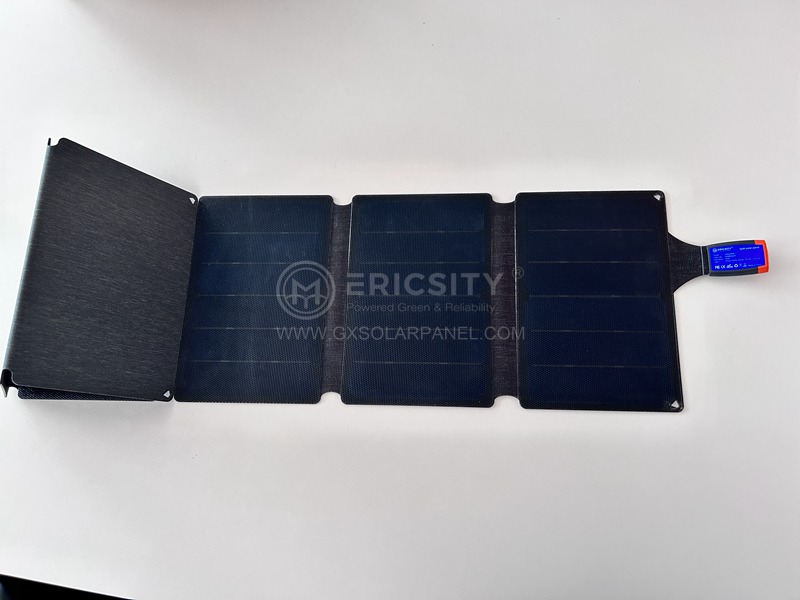HOT PRODUCT
Product Details
40-watt Flexible Vs. Traditional Solar Panels: A Comparative Analysis
Title: 40-watt Flexible Vs. Traditional Solar Panels: A Comparative Analysis
Introduction:
Renewable energy sources play a crucial role in striving for a sustainable future. Solar energy, in particular, has gained widespread popularity due to its abundant availability and decreasing costs. As the demand for solar panels increases, innovations in their design have led to the introduction of flexible solar panels. This article aims to provide a comparative analysis of 40-watt flexible solar panels and traditional solar panels, exploring their characteristics, advantages, and limitations in order to help readers make an informed decision.
Characteristics of 40-watt Flexible Solar Panels:
40-watt flexible solar panels stand out for their unique characteristics. Made using lightweight materials, such as thin-film layers or monocrystalline silicon cells, they offer flexibility and versatility. These panels can be curved or bent to fit various surfaces, making them ideal for unconventional installation spaces. Additionally, they boast a sleek, low-profile appearance and are generally more aesthetically pleasing compared to traditional solar panels.
Advantages of 40-watt Flexible Solar Panels:
1. Versatility: The flexibility of 40-watt solar panels enables installation on irregular surfaces like vehicles, boats, or even curved roofs, expanding the possibilities for solar power utilization.
2. Lightweight and Portable: These panels are considerably lighter than traditional ones, making them easier to transport and handle during installation or relocation.
3. Durability: Flexible solar panels are designed to withstand various weather conditions, including high winds, hail, and snow. They are also less prone to micro-cracks or damage caused by external stress.
4. Aesthetics: Their low-profile design and sleek appearance make them more visually appealing, seamlessly blending into the architecture or surroundings without compromising the aesthetic appeal of a structure.


Limitations of 40-watt Flexible Solar Panels:
1. Efficiency: Flexible solar panels, due to the thin-film technology used in their construction, tend to have lower energy conversion efficiency when compared to traditional solar panels. The reduced efficiency translates into a larger surface area requirement for generating the same amount of electricity.
2. Limited Space for Electronics: Flexibility comes at the cost of accommodating fewer electronic components compared to traditional panels. This might restrict additional functions like monitoring systems or optimization techniques.
Characteristics of Traditional Solar Panels:
Traditional solar panels, also known as rigid or crystalline panels, have been around for decades and have a well-established track record in the solar industry.
1. Higher Efficiency: Traditional panels generally have a higher energy conversion efficiency, meaning they can generate more power per unit area, making them suitable for installations with limited space.
2. Established Technology: As older and more widely used technology, traditional solar panels benefit from extensive research, development, and improvements in terms of durability and reliability.
3. Wider Options: Traditional solar panels are available in different sizes and wattages, allowing for better customization to meet specific energy needs.


Limitations of Traditional Solar Panels:
1. Limited Installation Options: These panels are rigid and require a flat or inclined surface, making unconventional installations or curved surfaces challenging.
2. Heavy and Bulky: Traditional panels are significantly heavier and bulkier compared to flexible ones, making transportation and installation more cumbersome.
Conclusion:
Both 40-watt flexible solar panels and traditional solar panels have their own unique advantages and limitations. The choice between the two largely depends on individual preferences, compatibility with the installation location, and energy requirements. If versatility, aesthetics, and the ability to fit unconventional spaces are prime concerns, flexible solar panels can be a great choice. However, if efficiency and established technology are the key factors, traditional solar panels might be the preferred option. Ultimately, it is essential to assess one’s specific needs and consult with solar professionals to make the most informed decision for a successful solar energy installation.




